Replication Rules
Replication Rules are rules you set up to periodically replicate folders between the gateway and other local or remote devices in either direction.
For example, you can set up your gateway to copy a certain folder on a daily basis to an external USB drive. Replication rules support replicating data to and from network computers using a variety of methods, including Windows File Sharing (CIFS), WebDAV, and RSync. You can also use replication rules to back up a local folder to another local folder on the gateway.
Note: If you choose to the RSync method, you have to first enable the RSync server for the gateway and for the destination. To enable the RSync server for the gateway:
i In the CONFIGURATION tab, select Share > RSync Server.
The RSync Server page is displayed.
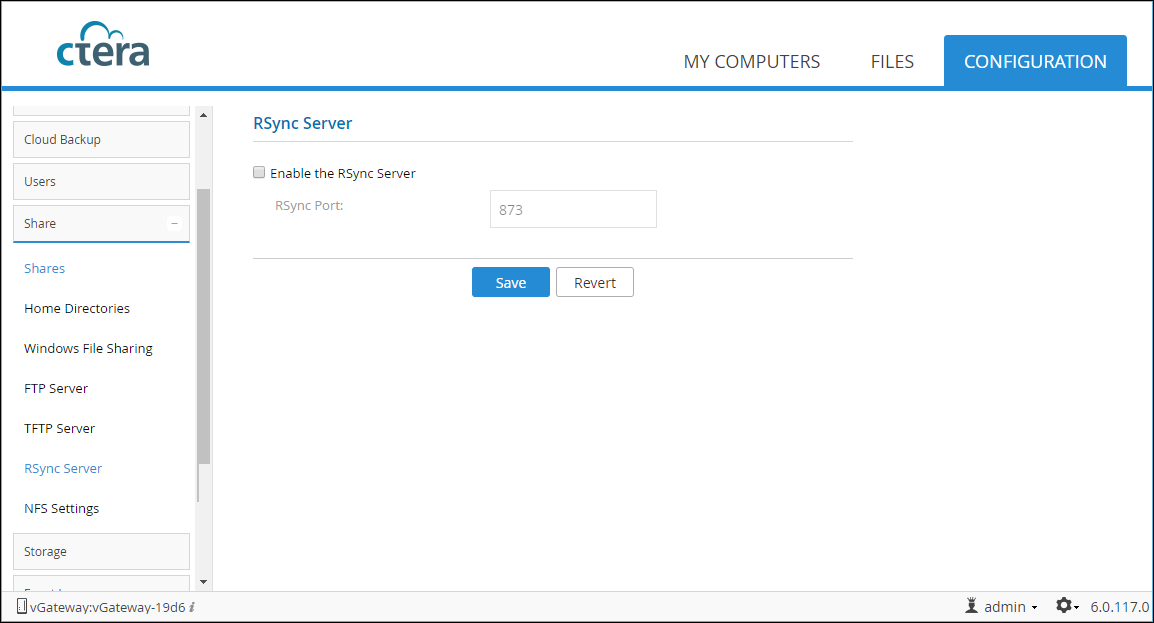
ii Check Enable the RSync server and if not using the default RSync port, specify the port to use for RSync connections.
iii Click Save.
To create a replication rule:
1 In the CONFIGURATION tab, select Local Backup > Replication Rules.
The Replication Rules page is displayed.
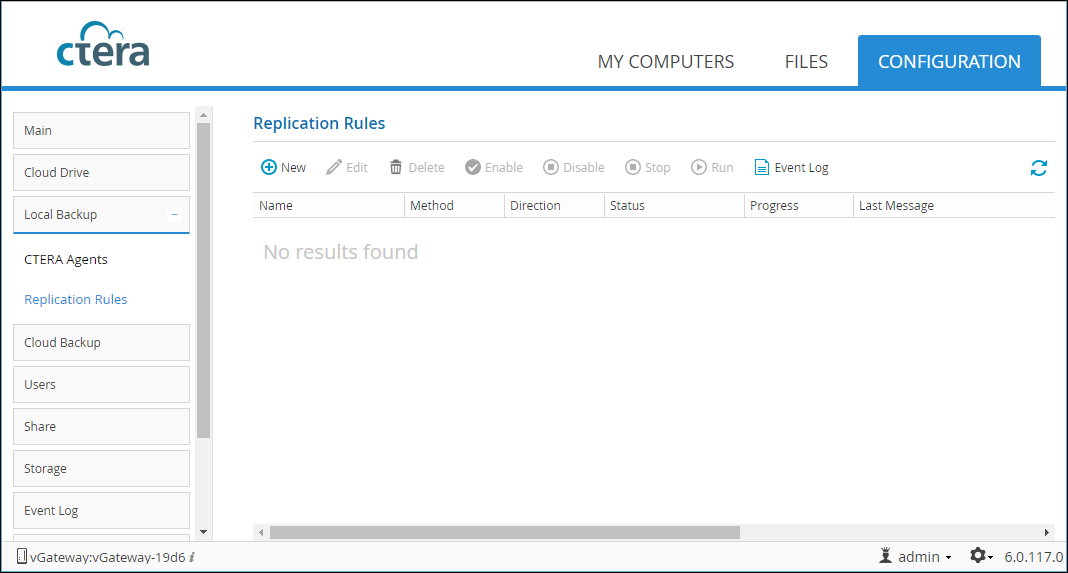
2 Click New.
The Select a Folder to Replicate window is displayed.
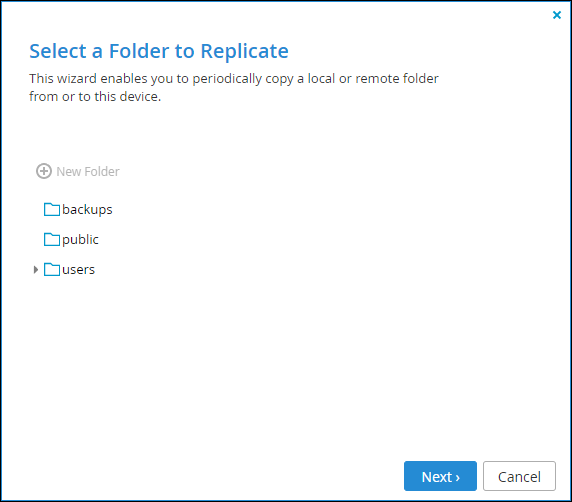
3 Select a local folder on the gateway.
This is the folder that the rule will periodically either replicate to a folder on the remote server or the destination folder for a replicated folder on the remote server.
Optionally, to create a new folder, select the parent folder in which you want to create the new folder and click New Folder and enter a name for the folder and click Save. A new folder is added to the selected parent folder.
4 Click Next.
The Specify a Replication Method window is displayed.
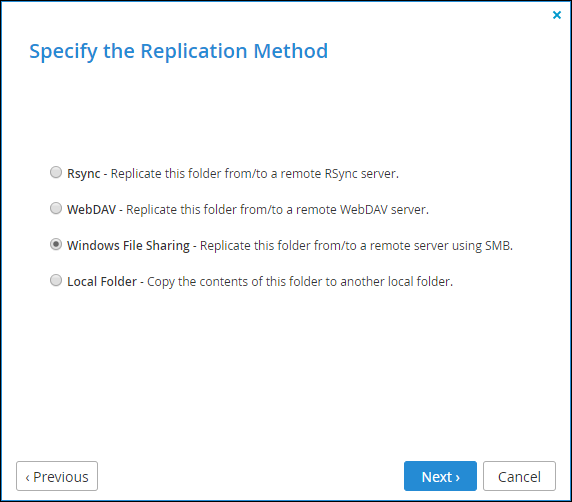
5 Select the replication method and click Next.
Unless Local Folder was selected as the replication method, the Select the Direction window is displayed. If Local Folder was selected as the replication method, go to For the Local Folder replication method: in step 7.
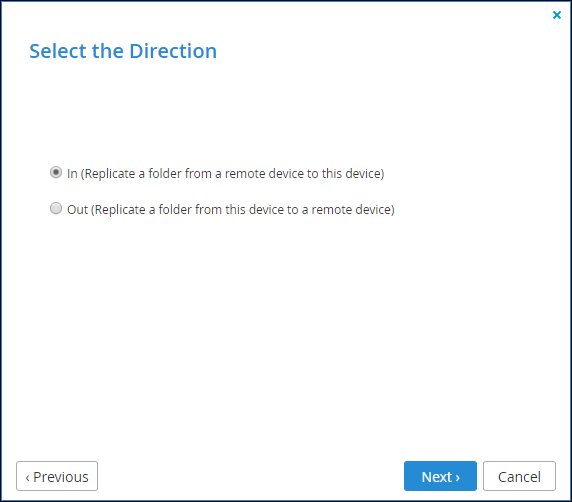
6 Select the replication direction.
In – Replicate from the remote server to the gateway.
Out – Replicate the folder from the gateway to the remote server.
7 Click Next.
The Select a Remote Folder or Enter the Connection Information or Select the Destination Directory window is displayed. This content of this window is dependent on the replication method selected.
For the Rsync replication method:
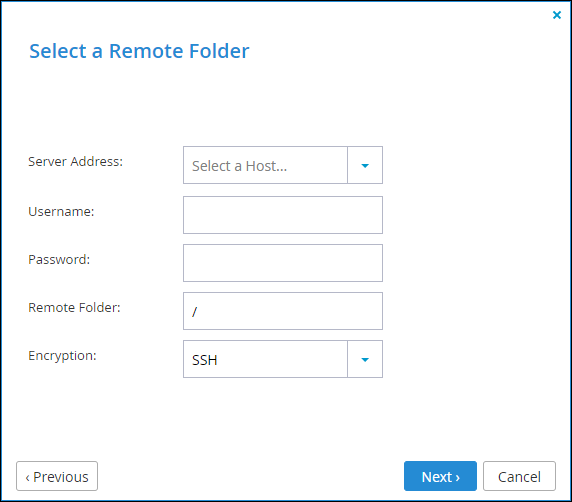
Enter the remote folder information:
Server Address – The Rsync server IP address or DNS name.
Username – The user name with which the gateway should authenticate to the remote server. Specify targetDevice\username for the username.
Password – The password for the user.
Remote Folder – The path to the folder on the remote server, with which you want to replicate files. When replicating between two CTERA gateways, the path must start with the share name, and not with a forward slash (/).
Encryption – The encryption method to secure the connection to the remote server:
None – Do not encrypt the connection.
SSH – Secure the connection using SSH. The remote server must support SSH access.
SSL – Secure the connection using SSL. The remote server must support SSL access.
When replicating between two CTERA gateways, you must select None or SSL.
For the WebDav replication method:
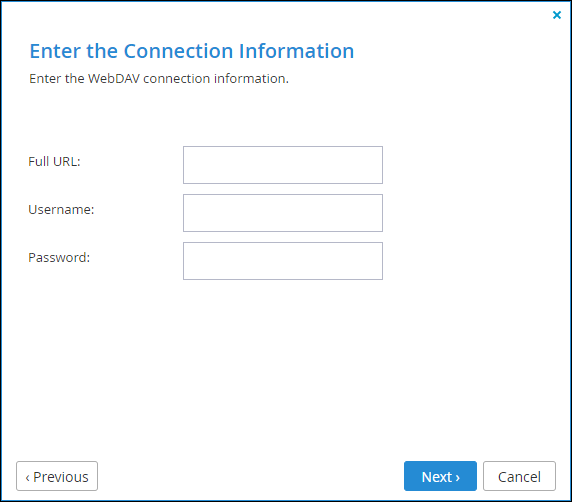
Enter the connection information:
Full URL – The full URL of the remote WebDAV server. This must start with http:// or https://.
Username – The user name with which the gateway should authenticate to the remote server.
Password – The password for the user.
If the WebDAV server does not require authentication, you can leave Username and Password fields empty.
For the Windows File Sharing replication method:
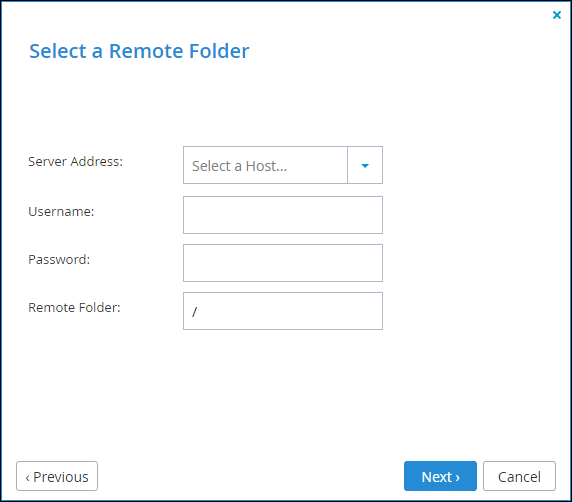
Enter the remote folder information:
Server Address – The Windows File Sharing server IP address or DNS name.
Username – The user name with which the gateway should authenticate to the remote server.
Password – The password for the user.
Remote Folder – The path to the folder on the remote server, with which you want to replicate files. When replicating between two CTERA gateways, the path must start with the share name, and not with a "/".
For the Local Folder replication method:
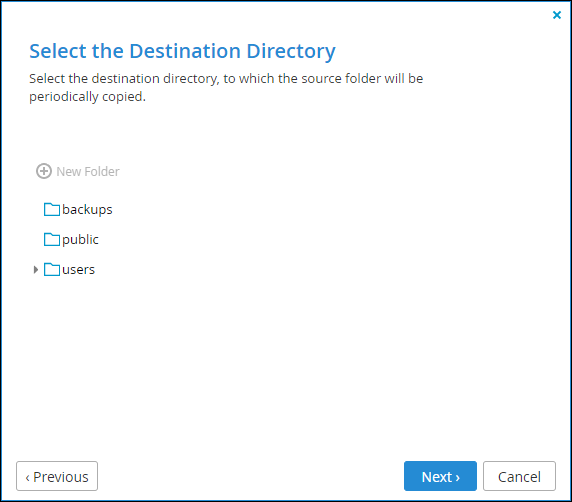
Enter the folder that the rule will periodically copy to.
Optionally, to create a new folder, select the parent folder in which you want to create the new folder and click New Folder and enter a name for the folder and click Save. A new folder is added to the selected parent folder.
8 Click Next.
The Configure Advanced Options window is displayed.
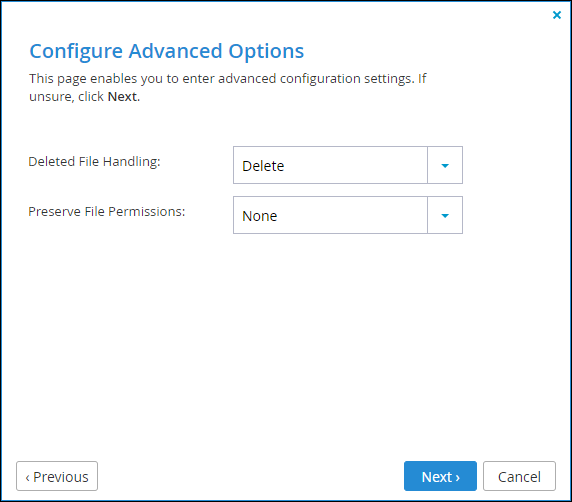
9 Optionally define advanced configuration settings:
Deleted File Handling – How deleted files should be handled:
Move to Trash Can – Deleted files in the source folder are moved from the destination folder to the Recycle Bin.
Delete – Deleted files in the source folder are permanently deleted from the destination folder.
Keep Deleted Files – Deleted files in the source folder are kept and not deleted in the destination folder.
Preserve File Permissions (Rsync and Windows File Sharing replication methods) – How the permissions for replicated files are retained:
None – Permissions configured for a file in the source folder are not retained for the parallel file in the destination folder.
Basic Permissions – Basic permissions configured for a file in the source folder are be retained for the parallel file in the destination folder.
All Permissions – Full permissions configured for a file in the source folder are retained for the parallel file in the destination folder.
10 Click Next and define the replication schedule.
11 Click Next.
The Define the Replication Schedule window is displayed.

Select the frequency at which the folder is replicated. The window changes dependent on whether the frequency is Manual, hourly, daily, weekly, monthly or periodically.
12 Click Next and name the rule.
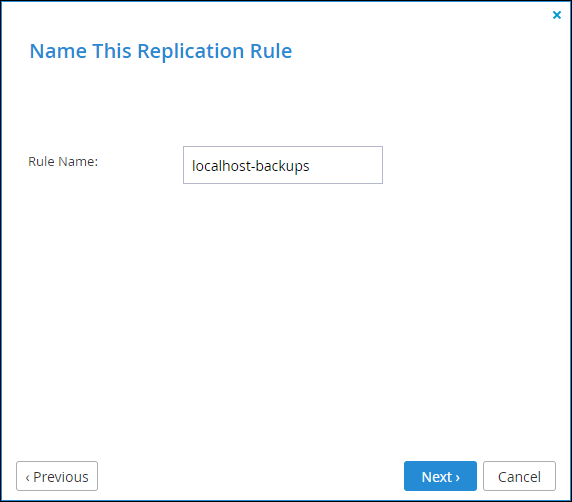
13 Click Next and then Finish.
The replication rule is displayed in the Replication Rules page.